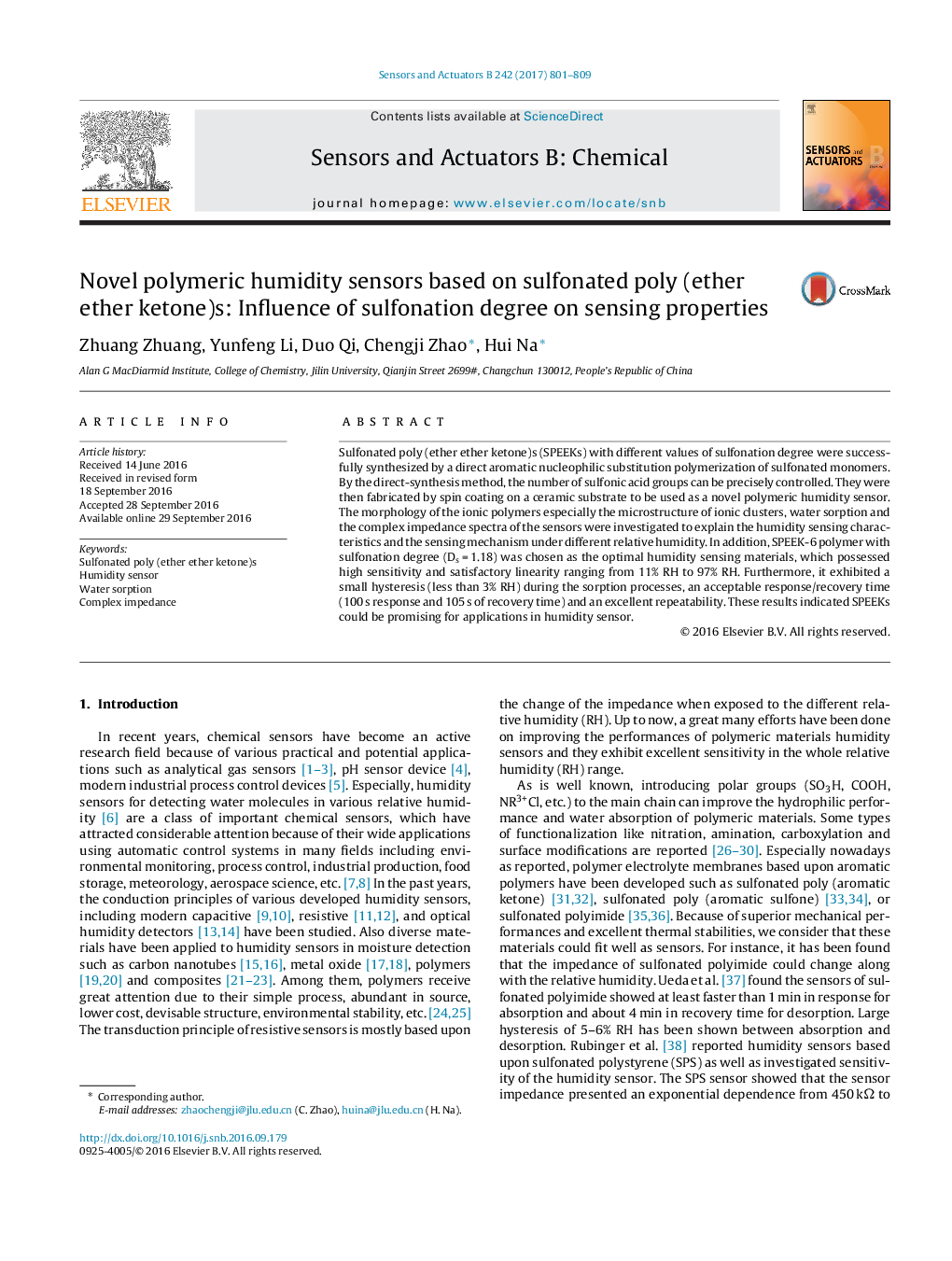| Article ID | Journal | Published Year | Pages | File Type |
|---|---|---|---|---|
| 5009747 | Sensors and Actuators B: Chemical | 2017 | 9 Pages |
â¢SPEEKs were successfully synthesized by a direct aromatic nucleophilic substitution polymerization of sulfonated monomers.â¢The sensor showed wide operating work range and excellent humidity-sensing properties.â¢The sensor is capable of detecting the small hysteresis (less than 3% RH).â¢Protons and ions contribution contributed to the conductance of the SPEEK polymer in low and high relative humidity according to the complex impedance spectra.
Sulfonated poly (ether ether ketone)s (SPEEKs) with different values of sulfonation degree were successfully synthesized by a direct aromatic nucleophilic substitution polymerization of sulfonated monomers. By the direct-synthesis method, the number of sulfonic acid groups can be precisely controlled. They were then fabricated by spin coating on a ceramic substrate to be used as a novel polymeric humidity sensor. The morphology of the ionic polymers especially the microstructure of ionic clusters, water sorption and the complex impedance spectra of the sensors were investigated to explain the humidity sensing characteristics and the sensing mechanism under different relative humidity. In addition, SPEEK-6 polymer with sulfonation degree (Ds = 1.18) was chosen as the optimal humidity sensing materials, which possessed high sensitivity and satisfactory linearity ranging from 11% RH to 97% RH. Furthermore, it exhibited a small hysteresis (less than 3% RH) during the sorption processes, an acceptable response/recovery time (100 s response and 105 s of recovery time) and an excellent repeatability. These results indicated SPEEKs could be promising for applications in humidity sensor.
